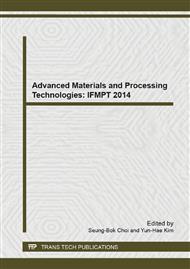p.673
p.677
p.681
p.685
p.689
p.695
p.699
p.703
p.707
Characteristics and Sequences of Fractures in the Tight Conglomerate Reservoirs of Jiulongshan Structure
Abstract:
Fracture is an important controlling factor for the distribution of natural gas reservoirs in the tight conglomerate reservoirs in the Lower Jurassic Zhenzhuchong Formation at the north of Western Sichuan basin. Using the data of outcrops, cores, image logs and thin sections, combined with experimental analysis, we analyze the fracture origin types, distribution characteristics and formation sequences. There are three types of fractures, i.e. tectonic fractures, diagenetic fractures and original fractures in the tight conglomerate reservoirs. Among them, tectonic fractures are dominant, which can be classified into four sets, i.e. E-W, nearly S-W, NWW-SEE, NEE-SWW orientations. According to the statistics of areal density and fractal dimension, the average fracture areal density is 0.31cm/cm2, with the bulk in the range of 0.15-0.60cm/cm2. The fracture fractal dimensions are distributed at 0.95-1.70. There is a well positive correlation between fracture areal density and fractal dimension. Micro-fractures are important channels that connect matrix intergranular pores and intragranular dissolved pores, which improve the connectivity among pores. The tectonic fractures in the study area were formed in two periods, i.e. the end of Cretaceous and the end of Neogene.
Info:
Periodical:
Pages:
689-692
Citation:
Online since:
February 2014
Authors:
Price:
Сopyright:
© 2014 Trans Tech Publications Ltd. All Rights Reserved
Share:
Citation:


